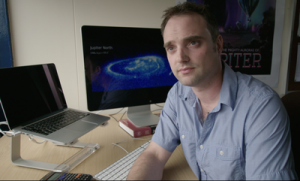From Galileo’s revolutionary observations of its system of satellites to hypotheses regarding its role in delivering water to the young Earth, Jupiter has played a distinguished role in furthering our understanding of our place in the cosmos. However, many mysteries remain about the king planet, such as the nature of its interior structure, the abundance of water in its atmosphere, and the behaviour of its mighty magnetic field. With these in mind, in 2016 Jupiter gained an artificial companion charged with answering some of these questions: the NASA Juno spacecraft, successfully placed into a polar orbit on 4 July. As well as taking the first pictures from over the poles of Jupiter, Juno is a mapping mission that will reveal the nature of the planet’s gravity and magnetic fields in great detail, will peer beneath the clouds to find Jupiter’s water, and will fly right over the brightest and most powerful auroras in the solar system to reveal how Jupiter interacts with its space environment. Juno has at present successfully executed two close-approaches with its science instruments on, and is returning spectacular and surprising data about Jupiter. In this talk, we will discuss the Juno mission and some of its first science results.
Dr Nichols graduated with a PhD from the University of Leicester in 2004 under the supervision of Prof. S. H. W. Cowley, with a theoretical thesis regarding the nature of Jupiter’s magnetosphere and auroras. He has since held research associate posts at the University of Leicester and Boston University, Massachusetts, working with Hubble Space Telescope observations of Jupiter’s and Saturn’s ultraviolet auroras. He was awarded a 5-year Science and Technology Facilities Council Advanced Fellowship in 2011, was appointed to a lectureship in 2013 and a readership in 2016. Dr Nichols continues to work with Hubble Space Telescope data, having been awarded time to observe Jupiter, Saturn, Ganymede, and exoplanet WASP-12b, and is presently also working with Juno data as a Juno Science Team member. He has also recently expanded his theoretical studies to consider exoplanets and Brown Dwarfs.





You must be logged in to post a comment.